Introduction to Bebop Scale Forms
In this lesson we’ll explore the basic forms of Bebop scales so you can start getting the patterns down and experiment with them in your music. There are times when you solo that you may want to do a scale run over a chord. Have you ever noticed that a straight descending scale run as eighth notes over a chord can sound a little off? Try playing a descending A Mixolydian scale over an A dominant 7 chord as straight eighth notes – the scale does not quite outline the chord the way your ear expects it to. This is due to the alignment of tones over strong and weak beats. Your ear really hones in on beats one and three in a four beat measure, these are the strong beats. Beats two and four are considered weak. Additionally anything that is a subdivision of a beat is considered weak. With the descending Mixolydian scale you have the following arrangement of tones-to-beat:
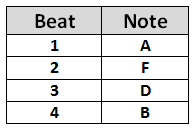
Figure 1
All of the chord tones end up on the “ands” of the beats. So how do we get descending runs to rhythmically align? We add chromatic passing tones and create “bop” scales. Play the descending scale again as eighth notes, but this time add a G#. Now look at how the beats line up:
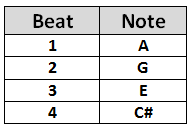
Figure 2
Do you hear the difference in how the chord is defined? The chord tones end up on all the beats. Bebop scales were used sparingly in jazz during the 1930’s and really became popular in the 1940’s. There are different types of bop scales corresponding to the different modes, but they all have an added chromatic passing tone making them eight note scales.
Let’s start with the scale we just defined: Bebop Dominant Scale. The dominant bop scale is formed from the Mixolydian mode of the scale – the chromatic passing tone is added between the seventh and the root. Here is the C-Bebop Dominant scale:

Figure 3: C Bebop Dominant
This scale is normally played over V chords and II-V progressions. Try it out over a II-V-I progression, use the descending bop scale played as eighth notes starting on II and ending with the tonic on I. You’ll be amazed at how well it lays over the chord changes.
The next bop scale to consider is the Bebop Dorian Scale. In this scale we take the normal Dorian mode and add a chromatic passing tone between the third and fourth notes of the scale. The following figure shows the G-Dorian Bop scale.

Figure 4: G Bebop Dorian
This scale can also be used over II-V progressions and works well over the II chord. You’ll notice that we added the same chromatic passing tone in the G-Dorian Bop scale as we did in the C-Dominant Bop scale – the B natural. This is because G-Dorian and C-Dominant are both modes from the key of F major, so it makes sense that we would be adding the same chromatic passing tone. Unfortunately that rule does not apply for our next scale – the Major Bebop scale. In the Major Bop scale, built off the Ionian mode form, we add the chromatic passing tone between the fifth and sixth notes. Therefore an F Major Bop scale would look like the following:

Figure 5: F Bebop Major
The same chromatic passing tone is used in the Melodic Minor Bebop scale. Therefore the F Melodic Minor Bop scale would be:

Figure 6: F Bebop Melodic Minor
Now that you’ve got the Bebop scale concept under your belt, along with four different bop scale forms, it’s time to listen for them in recordings and try them out in your own soloing!

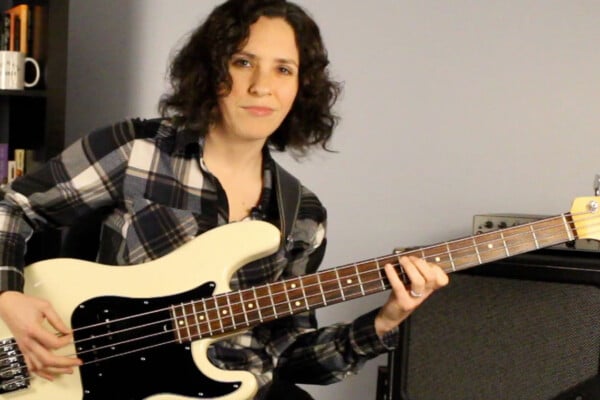
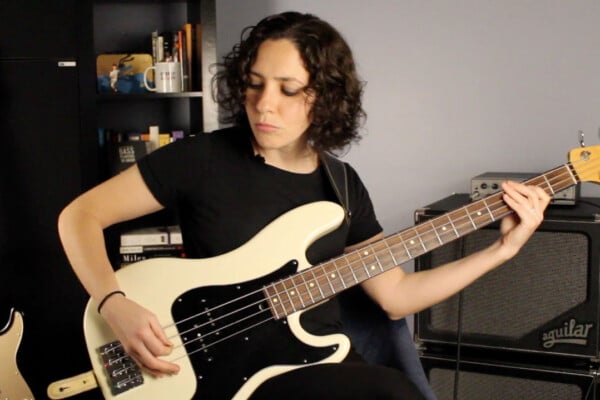
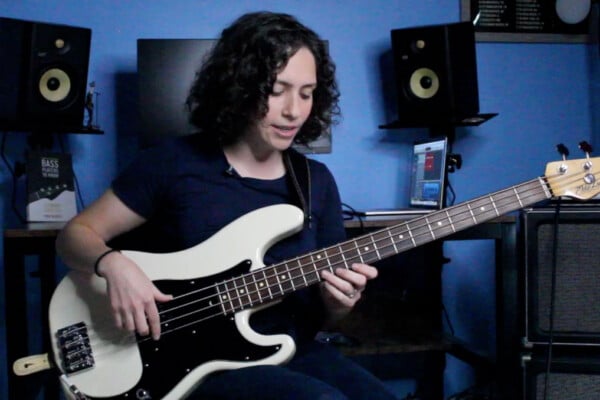
Regarding the minor bebop, would it be better to have a natural 7th to get more chord tones on the beat? Adding the natural 3rd gives the 6th on beat 4, which is the minors ‘avoid note’. Also major 7ths on minor chords sound hip ;)
Thoughts?
Hey JC – if you like the sound of major 7ths on minor chords I say go for it ;) This is one of many tools in the toolbox, so I’d say go for whatever modifications work for you, there’s never going to be a cookie-cutter solution that applies to everything, you just have to feel out the line.
Th one thing I dislike about reading lessons w/o a teacher is I cant one step further w/o understanding something to get the gist of what you’re saying…
Un the very first paragraph you say to use the A Mixolydian scale, isn’t that the fifth mode of the key of D ? Therefore, there is no F, only an F#, right?
Where does the “F” come from in figure #1?
Isnt D major D E F# G A B C# D ?
I really dont understand….Please help!
Hi smilinsteve The reason that note is there is because its an overtone and bebop scales are synthetic. This means that all the chord tones lay on the strong beats. The bebop scales aren’t diatonic which is why they are tricky to get your head around at first.
Hope this helps and sorry if I’m not concise I have literally just got in from an all nighter
ask away if needs be
Tom
Basist ful dis world.
are you one?
Cool
I think Smilinsteve is right, though: the A Mixolydian has A-G-F#-E-D-C#-B-A, and Figure 1, which comes after the text referring to “descending Mixolydian scale” has F. I don’t know, I suppose that F natural would be there in a descending A major bebop scale, but it still wouldn’t fall on the beat. Are you sure you didn’t mean F# in Figure 1? We’re actually not talking about beats 2 and 4 being weak, but about the upbeats, i.e. the ‘and’ of each beat, being weak; in fact, in most traditional jazz “swing” beats, they’d be shorter, too.
music gives life…………….
music gives life…………….